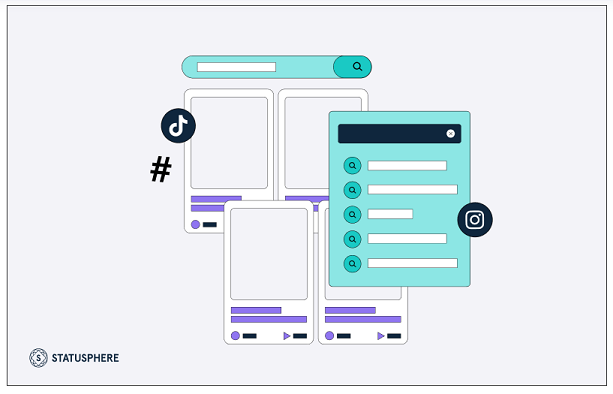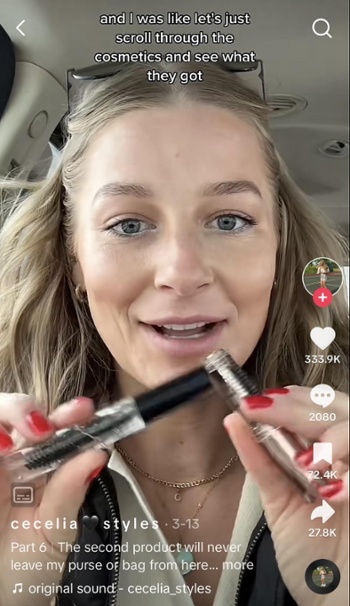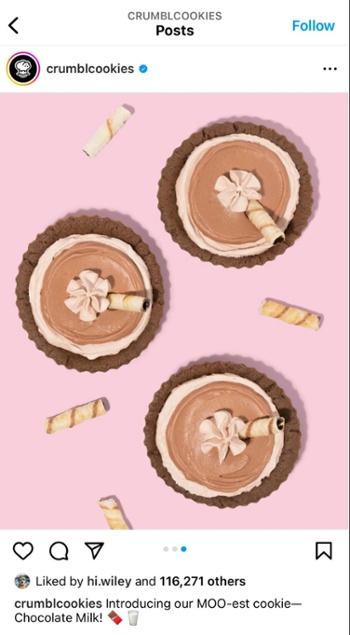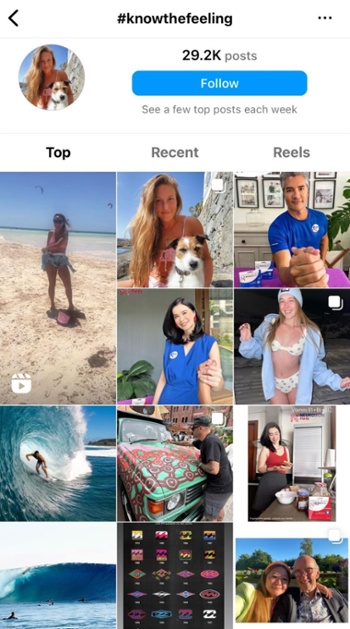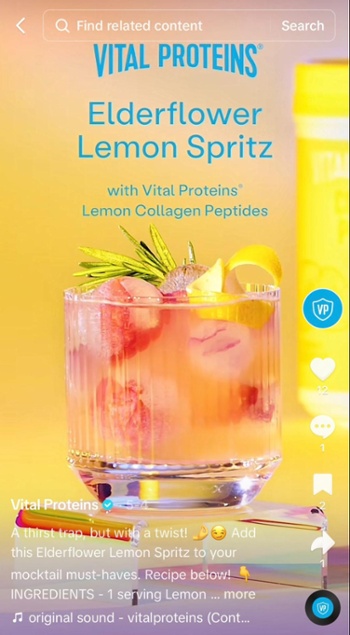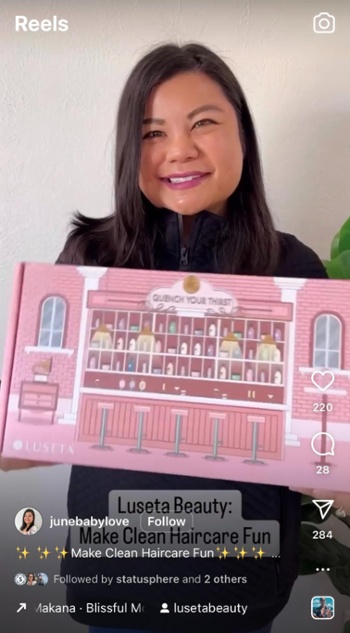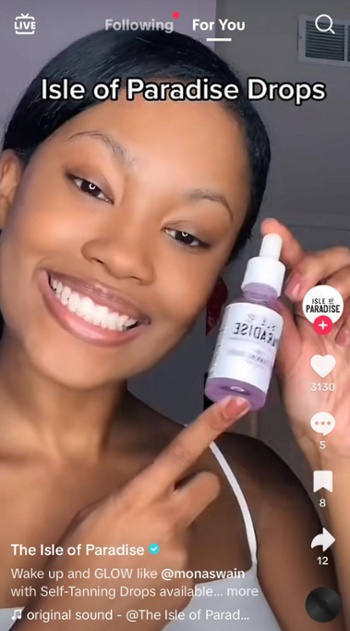By Kristen Wiley.
What does social SEO actually look like? This post digs into examples of social search engine optimization and how brands are ranking in social search right now.
Social SEO means applying search engine optimization (SEO) strategies to social media:
- Thinking of social platforms like search engines (and not solely distribution channels)
- Identifying consumer search trends to inform your organic and paid social content
- Creating content to satisfy search intent and rank for relevant social media keywords
Meanwhile, recent research confirms that platforms like TikTok and Instagram are peeling product searches away from Google and Amazon among younger consumers.
That’s why brands are scrambling to figure out how to improve social media SEO rankings ASAP.
Below we dig into real examples of social SEO to highlight how brands rank in social search.
3 Examples of Social Media SEO in Action
Good news for brands: there’s no one-size-fits-all approach to tackling social SEO.
Much like ranking in Google search, your social media SEO strategy should involve a variety of tactics. From uncovering keywords to creating search-friendly content, here are three real-life examples of social SEO to inspire brands.
1. Brands Targeting Social Media Keywords
Keywords are at the heart of traditional search optimization and social SEO is no different.
For CPG brands, it’s no coincidence that many of the most popular and frequently searched social SEO keywords are similar to what you’d see on Google. For example:
- How-to keywords (ex: “how to remove stains from white clothes”)
- Superlative keywords (ex: “best pregnancy pillow”)
- Tips and advice-related keywords (ex: “ways to fall asleep”)
You can see the value of ranking for these respective keywords on TikTok or Instagram if you were a brand in the cleaning, parenthood or sleep supplement spaces, right?
Look no further than how brands promote products on TikTok to see how product and pain-point social media keywords can be incorporated into short-form videos. The same applies to IG Reels and photos. The social SEO example below highlights why being above the fold is valuable for brands.
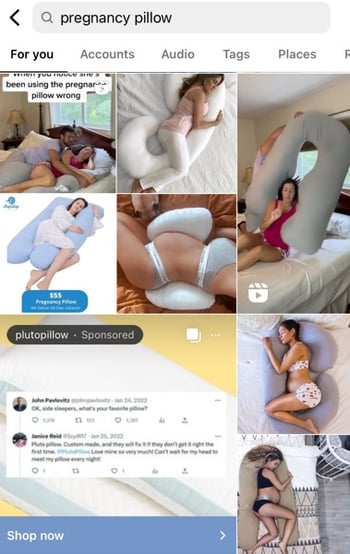
Brands that rank for keywords related to their products or industries make it happen through a combination of word-of-mouth and social media keywords.
That’s why UGC and influencer collabs are becoming more important as social SEO grows.
Social media keyword research is kind of an art and a science. You need a pulse on your audience, their challenges and how to speak their language. Coupled with social SEO software, you can confirm what your target audience is actually searching and build your social keyword strategy from there.
What do you do with these social SEO keywords, though?
Consider how you might sprinkle keywords in the title, headers and meta descriptions of a blog post.
With social SEO, you have options to include target terms in your content via:
- Video descriptions
- Captions
- Spoken audio
- Comments and replies
Much like you’re expected to naturally weave keywords into your content, the same rings true for social SEO. Keyword-stuffing social content is a recipe for tanking your engagement and potentially being seen as a spammer.
The takeaway? Think “less is more” when it comes to social SEO keywords.
Be strategic but subtle. Prioritize long-tail phrases and terms that could seamlessly be spoken or written in a video description by a creator organically. On the flip side, avoid rigid keyword phrases that feel robotic or unnatural.
2. Brands Ranking Within Social Media Hashtags
The role of hashtags in social SEO is crucial but often misunderstood.
Most consumers aren’t finding products in general hashtag searches. However, that doesn’t mean that hashtags are “dead.” Not by a long shot.
Below are some examples of how hashtags help your social SEO:
- Hashtags help social algorithms understand “what” your content is. This goes hand in hand with greater discoverability and visibility, especially when it comes to TikTok SEO. When TikTok sees a video or account earning consistent engagement within a hashtag, it’s like candy to the algorithm. This results in higher rankings.
- Hashtags help your content get served to a relevant audience versus random users. Food for thought: the #dryskin hashtag has over 4.7 billion views on TikTok. Hashtags related to specific customer problems or pain points or subsets of your audience are tags worth targeting.
- Hashtags can signal purchase intent. Branded hashtags are especially important here. Someone searching a specific brand (#Dove) or review-related hashtag (#DoveReview) is much more likely to make a purchase than someone browsing a general #skincare tag.
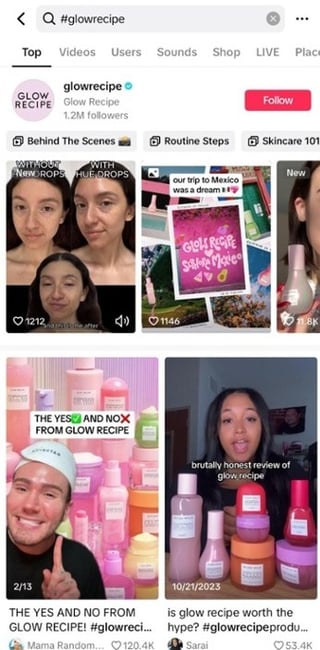
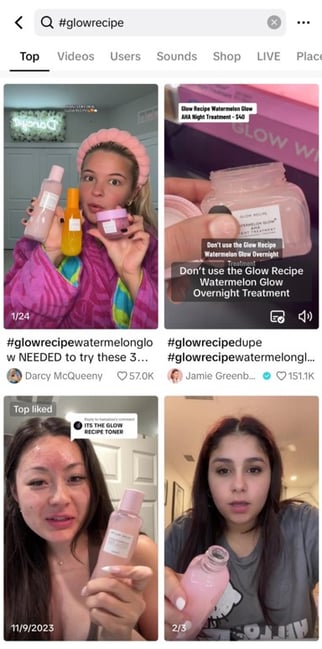
Again, the value of hashtags can’t be overstated for social SEO. Especially for beauty and skincare brands. Fact: beauty brands that consistently use TikTok hashtags rack up 3.5x more than the median industry engagement rate.
And since engagement impacts your social SEO rankings, a hashtag strategy does matter.
But just like with social SEO keywords, don’t overdo it!
TikTok and Instagram recommend between three and five as the “sweet spot.” Remember: you don’t want to distract viewers. A handful of tags is fair game for the sake of helping algorithms understand what your post is all about.
3. Brands Ranking with Search-Friendly Social Content
No surprises here. You can’t rank for social keywords and hashtags without content.
If you want examples of social SEO, look no further than content that’s already ranking for keywords. Here’s how you can mine for social SEO content ideas:
- Check TikTok and Instagram’s autocomplete results for inspiration. These are real-life social media keywords that people are using already.
- Look at what’s ranking for “best [product]” or “how-to [task]” keywords. These are prime keywords to tie to your future content.
- Focus on pain points. What are the problems your target audience is hoping to solve? Think about struggles, challenges and common complaints. Anticipating customer questions and concerns is a goldmine for content ideas and social SEO keywords.
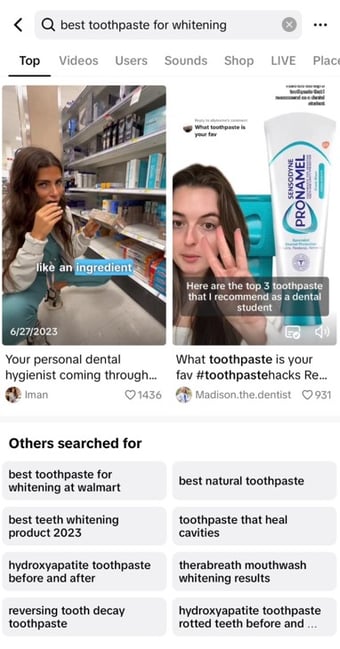
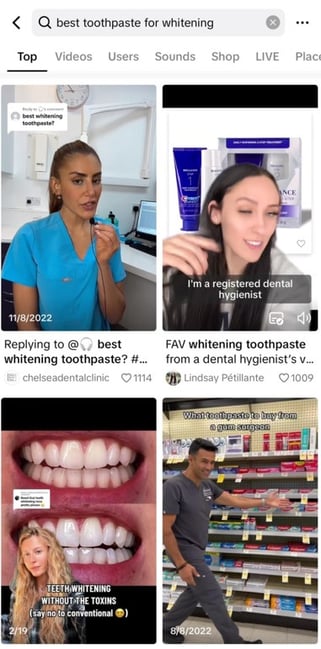
From here, you can brainstorm and start testing your content ideas for social SEO. In most cases, this involves a combination of education and entertainment (AKA“edutainment”).
Some common content formats that rank in social search include:
- “Storytime” videos showing off products in action
- How-tos and tutorials featuring products based on pain point keywords
- Before-and-after videos that highlight a product’s positive results
Just like with traditional SEO, be ready to test and experiment to see what ranks and what doesn’t.
Whereas one blog post can grab the lion’s share of Google traffic with multiple keywords, social SEO is much more of a numbers game in terms of volume.
We’ve seen first hand how a high volume of influencer content can help brands rank for keywords faster. This makes sense given how social algorithms on both TikTok and Instagram favour UGC and influencer content over brand-generated content.
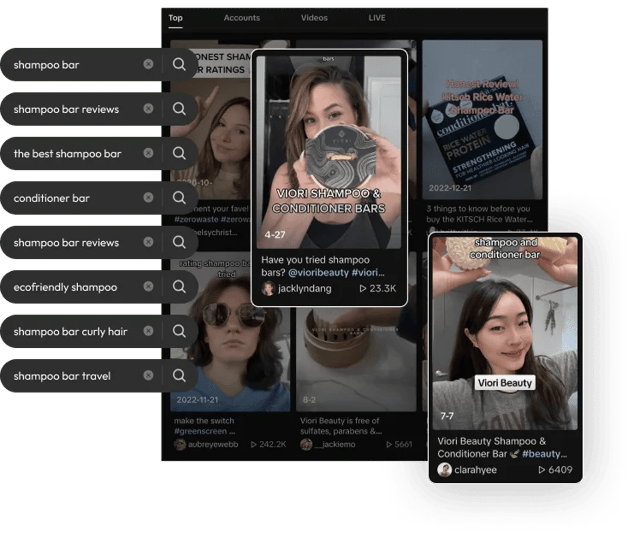 As a result, creators have more of a chance to “hit” with the algorithm and cement your brand’s social SEO rankings when they post on your behalf. Especially if you’re consistently partnering with a high volume of creators at once. This approach to influencer partnerships is becoming the norm for UGC advertising.
As a result, creators have more of a chance to “hit” with the algorithm and cement your brand’s social SEO rankings when they post on your behalf. Especially if you’re consistently partnering with a high volume of creators at once. This approach to influencer partnerships is becoming the norm for UGC advertising.
Creators can integrate both general and brand-specific keywords and hashtags while publishing relevant content ideas to help your brand rank even faster. These details can likewise feature in your brand’s creative brief so influencers hit the right beats.
How to Put These Social Media SEO Ranking Ideas into Action
Ranking in social search doesn’t happen by accident.
And so many brands are already cementing their rankings through consistent influencer collabs.
The good news? The best time to start growing your social SEO presence is now.
Making it happen is possible with a high volume of ongoing influencer partnerships and creators posting about your brand. The sooner you scale, the faster you can start ranking.
That’s where Statusphere’s micro-influencer marketing platform can help.
Our software matches brands with creators from our vetted network for collaborations at scale. With automated matchmaking, streamlined fulfilment and in-depth reporting, brands can generate more UGC and build their social SEO presence without waiting.
We’ve already powered 75,000 influencer posts on behalf of 400+ CPG brands.
Want to learn more about how our platform works? Get in touch with one of our experts to see how we can help you get more influencer content in a fraction of the time.

